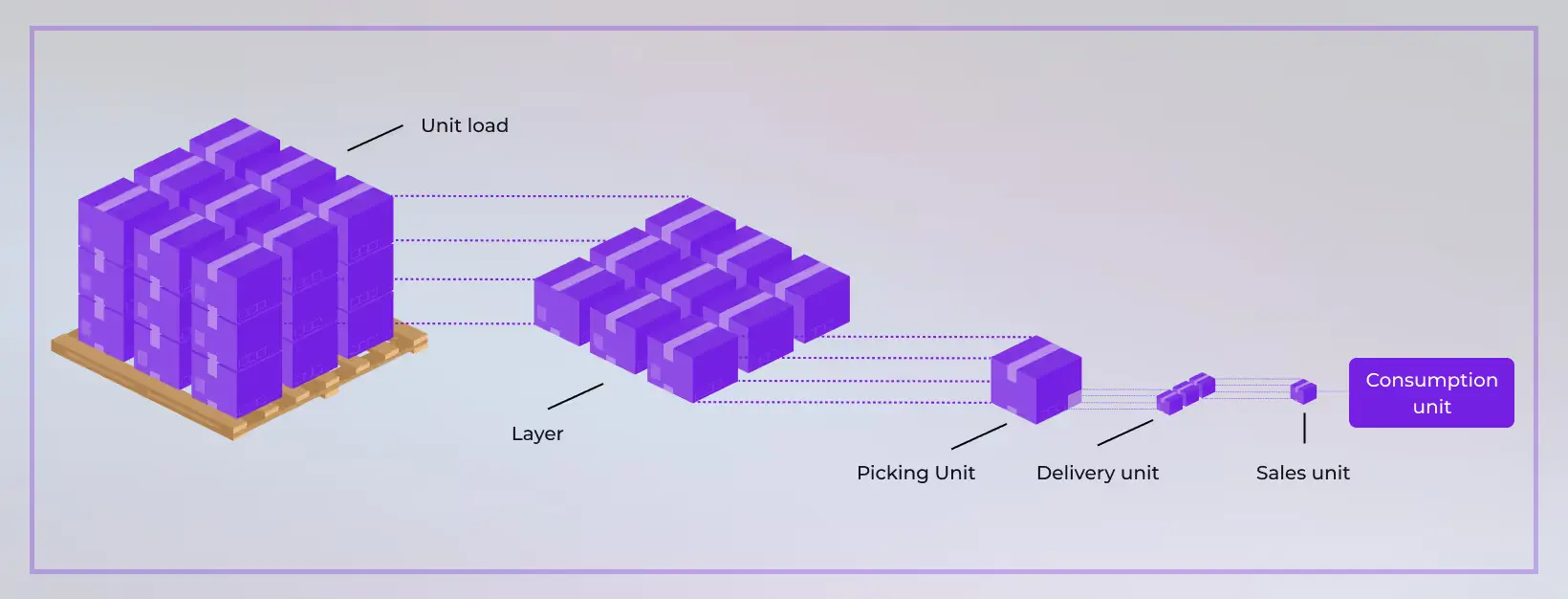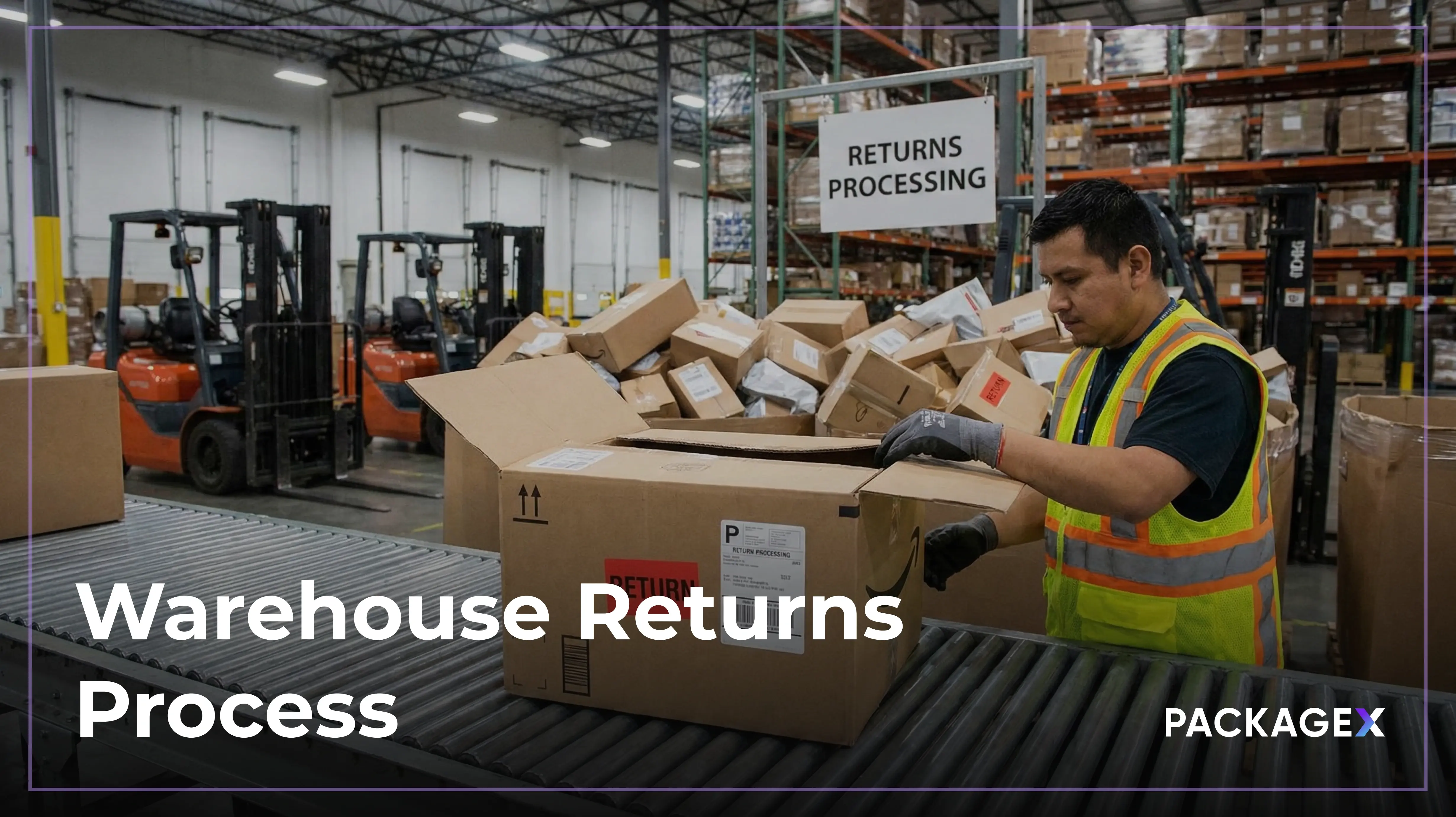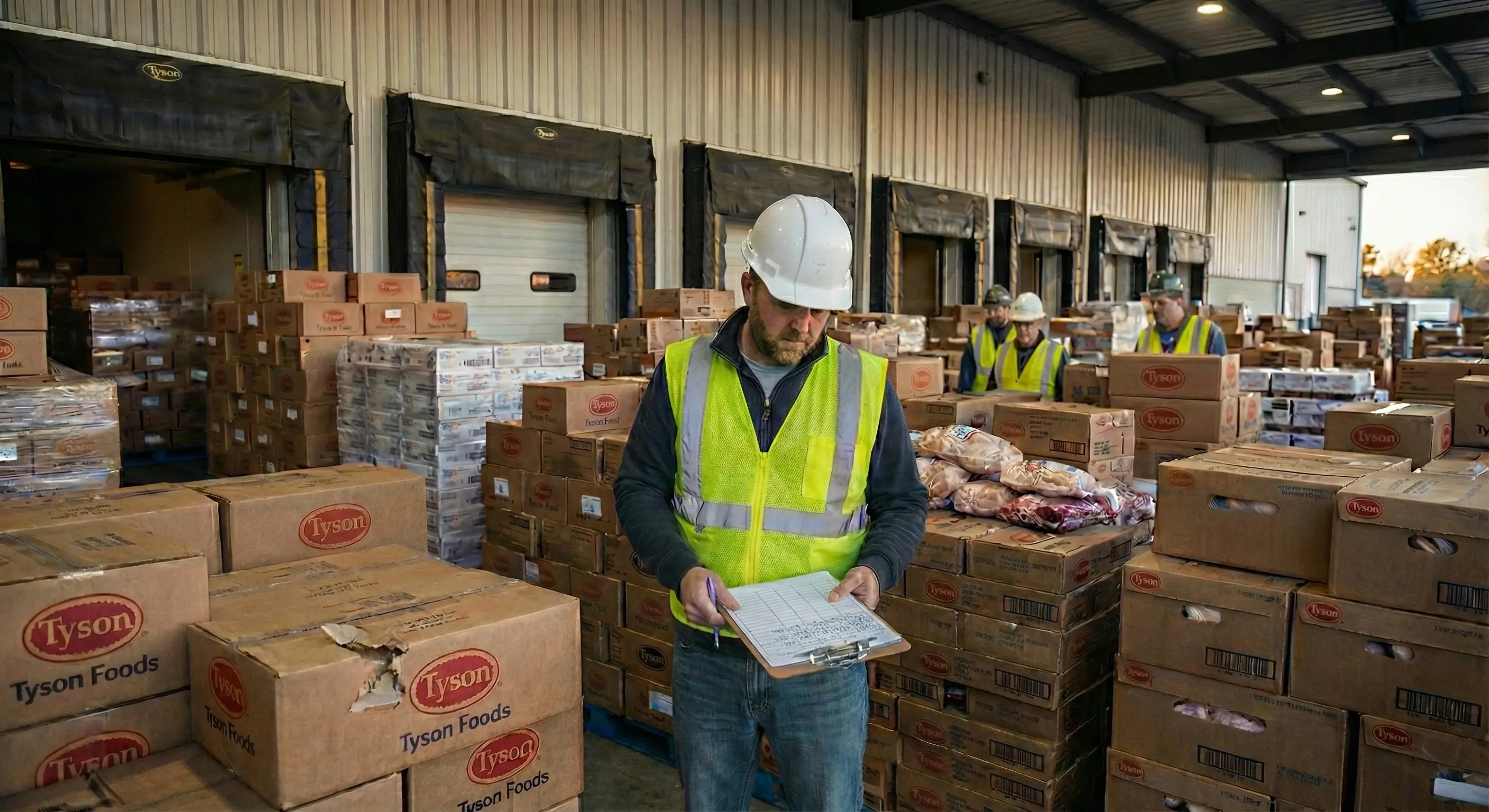Efficient product handling is essential for businesses to stay competitive in a fast-paced logistics world. One process that has evolved significantly over time is palletizing. What used to be a manual, labor-intensive task has been transformed by automated palletizing systems that deliver greater speed, accuracy, and safety.
The global palletizer market is projected to grow from USD 3.35 billion in 2025 to approximately USD 5.69 billion by 2034, expanding at a CAGR of 6.09%. This growth highlights the increasing adoption of automation across supply chains to improve efficiency and reduce costs.
Let’s explore what palletizing is and how modern AI and automation are reshaping this essential logistics process. Whether you’re handling uniform products or dealing with diverse shapes and sizes, understanding palletizing is key to enhancing productivity and optimizing operations.
What Is Palletizing?
Palletizing is the process of systematically arranging and stacking products onto a pallet to create a secure, uniform load for storage or shipment. It can be performed manually or automated using robotic palletizers, depending on the scale and complexity of operations. The goal is to maximize space efficiency, ensure product stability, and streamline handling throughout the supply chain. Proper palletizing techniques help prevent damage and reduce labor costs. This results in faster, safer, and more cost-effective logistics operations.
Why Is Palletization Important?
Pallets enable the efficient handling of oversized, heavy, or various types of loads using forklifts or pallet trucks. This way, a single worker can manage tasks that would otherwise require multiple people in a shorter time frame.
Let’s look at the benefits in detail:
- Improved product stability: Palletizing consolidates multiple products into a single, stable unit, wraps them in plastic film, and stacks them in a weight-balanced pattern to prevent shifting or damage. Proper palletization minimizes handling errors and exposure to damage.
- Faster product handling and shipment: Pallets enable quicker loading, unloading, and product handling, resulting in faster pick and pack and increased transport efficiency.
- Portability and transport efficiency: Pallets are easier to handle and stack across various transportation modes (trucks, ships, planes), simplifying tracking and reducing the number of individual items.
- Better operator safety: Automated and mechanical palletizing reduces the need for repetitive lifting of heavy loads, lowering the risk of worker injury.
- Optimized storage utilization: Pallets with standardized dimensions allow efficient stacking and storage, optimizing warehouse space and transportation capacity.
- Improved inventory control: Palletized products allow easier tracking of stock levels, as each pallet represents a known volume of merchandise, enabling better SKU management and monitoring.
How to Prepare and Pack a Pallet (Step-by-Step)
A well-packed pallet ensures stability, compliance, and protection throughout the supply chain.
Follow these steps to prepare your load properly:
1. Foundation Preparation
Inspect your pallet for cracks, loose boards, or protruding nails. A damaged pallet compromises safety and can collapse under weight. Always confirm the pallet can handle your total load before use.
2. The Pick-to-Box Process
Plan your loading sequence to evenly distribute weight. Place heavier boxes at the bottom and lighter ones on top. Consistent stacking minimizes shifting during transport.
3. Stacking Technique
Use an interlocking “brick” pattern to stabilize layers. Avoid overhangs that can cause product damage or instability. Keep the top layer flat to make wrapping easier and more secure.
4. Securing Methods
- Stretch Wrap: Start wrapping from the base, overlapping layers by 50%, and make 3–5 full rotations. The wrap should tightly bind the load to the pallet.
- Strapping and Corner Boards: Add plastic or steel straps for heavy loads. Use corner boards to protect edges and enhance vertical stability.

Types of Palletizing Solutions
Now that you know how to palletize, you should consider the best possible equipment for it. Each type is designed to suit specific production needs and logistical challenges. Here's a breakdown of the different palletizing solutions:
Manual Palletizing
Description: The most basic method of palletizing, where workers manually lift and stack products onto pallets. It requires significant physical effort and time, making it less efficient for large-scale operations.
Best for: Small-scale or low-throughput operations handling irregular or fragile items that are difficult to automate.
Semi-Automated Palletizing
Description: Combines human labor with automation tools such as hydraulic lifts, conveyors, or layer-forming systems. These setups assist workers by improving ergonomics and consistency while reducing physical strain.
Best for: Moderate production volumes that still require human oversight but benefit from partial automation to boost efficiency and safety.
Automated Palletizing
Description: Fully automated systems handle the entire palletizing process with minimal human input. They use advanced machinery and AI scanning to pick, pack, and stack products at high speed and with precision. Automated palletizers fall into several subtypes:
- Conventional Palletizers:
Use mechanical or robotic arms to pick and place products, often forming full layers at a time. Ideal for consistent, high-volume production lines. - Robotic Palletizers:
Feature robotic arms with specialized end effectors (grippers or suction cups) to handle products of varying sizes, shapes, and weights. These systems provide superior flexibility and accuracy for complex product mixes. - Layer Palletizers:
Automatically arrange entire product layers on a pallet at once. Common in high-speed operations like beverage, food, and consumer goods manufacturing. - Hybrid Palletizers:
Combine elements of both robotic and conventional systems to balance flexibility with throughput, making them suitable for facilities that manage diverse SKUs at scale.
Best for: High-speed, high-precision operations that demand consistency, real-time visibility, and quality control across packaging and logistics workflows.
High-Level Palletizers
Description: Positioned above the ground, these palletizers receive products from elevated conveyors and stack them on pallets below. They efficiently handle high-throughput operations.
Best for: Industries like bottling, canning, and packaged goods manufacturing, where products move rapidly through automated lines.
Low-Level Palletizers
Description: Operate at ground level, allowing products to be loaded directly from floor conveyors. They are generally slower but handle heavier or bulkier items with greater control.
Best for: Facilities with lower production volumes or those dealing with heavy goods where speed is less critical than safe handling.
Benefits of Palletizing Automation
- Faster Loading and Turnover
Increases loading speed and turnover for perishable and fast-moving goods, ensuring quicker order fulfillment. - Reduced Labor Requirements
Labor needs can decrease by up to 75%; often, only one operator oversees the entire palletizing process, cutting costs and improving safety. - 24/7 Operational Efficiency
Robots can work around the clock, allowing employees to focus on more value-added tasks such as quality control and maintenance. - Optimized Floor Space and Inventory Replenishment
Automated palletizing can save up to 50% of floor space, improving warehouse organization and streamlining inventory replenishment cycles. - Improved Sustainability and Transport Efficiency
Automation speeds up the loading of delivery vehicles, enhancing fuel efficiency and reducing environmental impact across supply chains.
Best Practices for Palletizing
Here are some ways to make sure that the palletizing process is as efficient as possible:
Optimize Product Arrangement:
Your pallet configuration should maximize stability and minimize wasted space. You can also use a pallet calculator to figure this out. Stack products uniformly and interlock them to prevent shifting during transit.
Here are some tips for handling irregularly shaped products:
- Use specialized grippers that can adapt to the product's shape.
- Develop specific palletizing layer patterns for irregular items and experiment with stability.
- Implement technology to visualize and optimize the palletizing process for irregular shapes.
There are three types of pallet stacking patterns that you can employ for the pallet arrangement:
Column Pallet Stacking:
Maintain the same footprint for stacked cartons.
Brick Pallet Stacking:
Alternate the footprint on each layer to create interlocking stability. This strong configuration reduces the number of boxes per pallet.
Interlocking Pallet Patterns:
Use a rotating stacking method for enhanced stability and support. It is best for higher-density loads, although it may reduce the total number of goods per pallet.
- Use proper pallets: Select pallets suitable for the weight and dimensions of the products. You also have to consider the material choice (wood, plastic, metal) based on load-bearing capacities and handling equipment.
- Secure loads: Use stretch wrap, banding, or strapping to secure loads firmly to the pallet. This prevents shifting or falling during transport, reducing damage and injury risks.
- Distribute weight properly: Material should be stacked so the weight is evenly distributed. This keeps the center of gravity low to prevent toppling.
- Labeling and documentation: Clearly label pallets with product details, quantity, and handling instructions for inventory management and minimizing errors.
- Training and safety: Train operators in proper palletizing techniques and safety measures. Ergonomic analysis can help reduce workplace injury risks.
Common Pallet Dimensions, Weight Standards, and Capacity Limits
The standard North American pallet size (48″ x 40″) is the foundation of modern warehouse and freight logistics. This size ensures smooth compatibility with trailers, racking systems, forklifts, and conveyor setups, allowing efficient storage and movement across the supply chain.
The GMA Pallet:
This 48″ x 40″ pallet, defined by the Grocery Manufacturers Association (GMA), remains the benchmark in North America. Its design allows for stable stacking, safe handling, and cost-efficient transport across LTL and full-truckload freight systems.
Understanding Pallet Weight Limits and Load Capacity
Knowing your pallet load ratings is key to safe and efficient freight handling.
- Dynamic load capacity: Standard wood pallets typically hold up to 2,500 lbs when lifted or moved.
- Static load capacity: When stationary, pallets can support greater weight, depending on design, material, and environmental factors.
Adhering to these limits protects both goods and handling equipment from damage during transport.
Global and Industry-Specific Pallet Sizes
Different industries and regions use specialized pallet sizes to support unique storage and handling needs.
Choosing the Right Pallet Material
The material of your pallet plays a major role in cost, durability, and compliance, especially for international shipments.
Wood (Industry Standard):
Affordable and versatile, wood pallets typically cost $10–$25 each and suit most freight applications. For exports, ensure pallets are heat-treated and stamped “HT” to meet ISPM-15 pest-control regulations.
Plastic or Composite Pallets:
More durable and hygienic, ideal for food, pharmaceutical, and high-value goods. Though more expensive ($50–$100+), they can last 10–15 years, providing long-term value.
Sustainability & Pallet Pooling:
Reusable programs like CHEP or PECO help reduce waste through pallet exchange systems. While they involve rental fees, they minimize disposal costs and promote circular logistics.
Use wood pallets for occasional domestic shipments. For regular or international freight, invest in treated or reusable pallets that meet all compliance and sustainability goals.
How to Choose the Right Palletizing Solution for Your Needs?
Selecting the right palletizing solution depends on multiple operational factors that impact efficiency and scalability:
- Assess production volume and throughput: Determine how much product your system needs to handle to ensure the chosen solution meets your output demands.
- Consider product variability: If your products vary in shape, size, or weight, choose a flexible robotic palletizing system that can adapt to different SKUs.
- Evaluate available floor space: Make sure the palletizing setup fits your warehouse layout without disrupting other workflows.
- Check system compatibility: The solution should seamlessly integrate with your existing production and warehouse management systems.
- Plan for scalability: Select technology that can grow with your operations to avoid costly upgrades later.
- Balance cost and ROI: Factor in both upfront investment and long-term operational savings when finalizing your budget.
Optimized Palletizing with PackageX
PackageX simplifies and enhances palletizing operations through intelligent automation and seamless data visibility:
- AI-powered scanning: Automatically capture and digitize data from shipping labels, BOLs, and other documents to track palletized goods with accuracy.
- Inventory management integration: Gain real-time visibility of palletized items and streamline movement across the warehouse.
- Warehouse automation: Leverage PackageX’s tools to automate repetitive processes, reducing manual errors and improving productivity.
- Unified warehouse management: Integrate PackageX solutions into a larger WMS ecosystem to optimize end-to-end palletizing workflows and boost operational efficiency.
FAQs
What is a palletizing system?
A palletizer is a machine designed to automate the sorting, transferring, and stacking of cases or products onto a pallet, typically at the end of a manufacturing line. This automatic process is especially beneficial for high-volume shipping, making it more convenient and efficient for businesses to manage their logistics.
Why do we palletize?
Palletizing is a great way to save space in your warehouse. By using vertical storage, you can make the most of your available space. Plus, optimized pallets can help you save on shipping costs. When products are stacked effectively, it not only makes for a more organized warehouse but also allows for more efficient shipping. It’s a win-win for both storage and logistics.
What is palletized shipping?
Palletized shipping is the process of stacking and securing boxes or goods on a sturdy pallet using stretch wrap or straps, allowing the entire load to be moved as a single unit. This method improves handling efficiency, reduces product damage and speeds up loading and unloading. It helps to meet LTL carrier requirements, and often helps lower overall freight shipping costs.
What is a pallet in a warehouse?
A pallet in a warehouse is a flat, sturdy platform made of wood, plastic, or metal that serves as a base for stacking and transporting goods. It allows easy lifting and movement of products with material-handling equipment, improving storage efficiency and reducing product damage.
What does "palletize" mean?
To palletize means to place or arrange goods on a pallet so they can be handled, stored, or shipped more easily. The goal is to improve safety, maximize space, and enhance the efficiency of loading and unloading during transportation.




